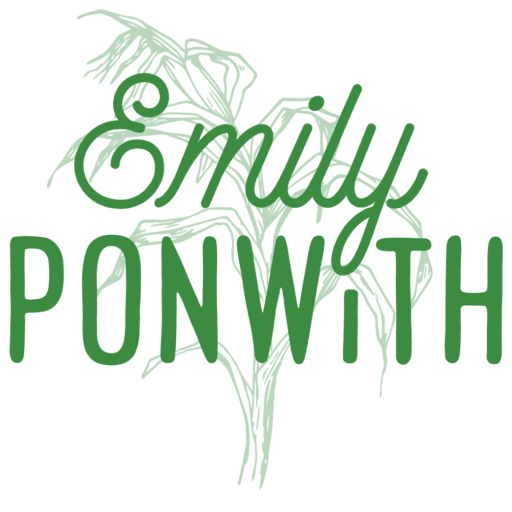Healthy soil, wherever you are.
Healthy soil is the foundation for a successful growing season. Whether you are planting a backyard garden in a metro area, homesteading on the outskirts of town, or growing many acres of crops; soil health matters.
Stewarding the Land
As farmers, it is a great honor to be stewards of the land each day of the year. It is not a job we take lightly, and understand that we must continuously be evaluating our practices. We work closely with our local NRCS (Natural Resources Conservation Services) office to construct a variety of soil management strategies. When it comes to soil, and many things in life, it is better to be proactive instead of reactive. Attempting to ‘fix’ or replace soil does not happen overnight. In addition to the time it takes to learn about how to best care for the soil and water, making adjustments to farming practices also takes many seasons and, oftentimes, a hefty amount of money invested in equipment.
Soybeans growing in a no-till corn field. The seeds were planted directly into the residue from the previous season’s crop.
Caring for the soil for generations.
Soil and water conservation have been a priority on our family farm for generations. My father-in-law began intentionally implementing conservation tillage practices back in the early 90’s. He knew the trials and practices he was exploring would benefit the farm for future generations. Since then, the process of improving soil health while simultaneously improving efficiency and sustainability of our farm has been an ongoing priority. At the end of each growing season we ask ourselves, how can we be better?
Photo from a 1992 trial comparing ridge till and no till.
Soil is alive.
Soil is home to a complete underground ecosystem. The healthier the soil, the greater the benefits not only for the farmer, but also for the Earth.
According to the NRCS, the four principles of soil health are:
- Minimize Disturbance (think plowing, digging, tilling, driving, etc)
- Maximize Soil Cover (plant cover and plant residue left behind after a growing season).
- Maximize living roots (Roots aerate the soil and hold it in place)
- Maximize Biodiversity (Plants and animals work together to return organic matter back to the soil).
As farmers it is impossible for us not to drive across our fields, we must plant, spray, fertilize, harvest. However, with new technologies we have been able to reduce the amount of passes per acre. The equipment many farmers choose to use now is multipurpose instead of single use. For example, our strip tillage machine is used to not only gently till the soil where it needs to be, but also apply fertilizer at the same time. In the past we would have had to make a pass to plow, then fertilize, and plow again in the spring.
Strip Tillage on the Farm
Instead of traditionally ‘turning the soil over’ with a large disc or plow, our farm has invested in a specialized strip tillage machine. This machine allows us to till a thin strip in the soil directly where seeds will be placed and fertilize the soil all in the same pass. This process is done in the fall after the crop is harvested to prepare the soil for the upcoming growing season while minimally disturbing the soil.
Dry fertilizer applied with strip tillage. It is placed with precise measurements so it will be exactly where next season’s crop can find it.
Crop Rotation
Most farmers rotate the crops they grow each season. If a field is planted to field corn one growing season, the next year it will likely be planted to soybeans in our region. When strip tilling, we only till our soybean ground that will be corn in the upcoming growing season. The corn ground is left untouched (no till) until planting the following spring. The residue leftover from the corn plants decompose and return organic matter to the soil. The residue leftover between the strips as well as the no till ground also aids in holding the soil in place to reduce wind and water erosion.
Tilled strips are made where the next season’s crop will be planted. This leaves an abundance of plant residue and root systems with the soil.
There is more than one right way to do something.
Whether gardening or farming, it can be easy to fall into conversations with others who have similar passions. What works well on one farm, may not work well for another. I’ve never seen two backyard gardens grown exactly the same. At the end of the day we are all doing the best we can with the knowledge and skills we have. Each new day we show up and open our minds and hearts to learning more about our practice and the world around us.
Caring for the soil is something we take great pride in.
Natural Resource and Conservation Services
If you would like to learn more about soil heath, the NRCS website has an abundance of resources and easy to digest information regarding the ins and outs of soil.
Check out: https://www.nrcs.usda.gov/wps/portal/nrcs/main/soils/health/


0 Comments